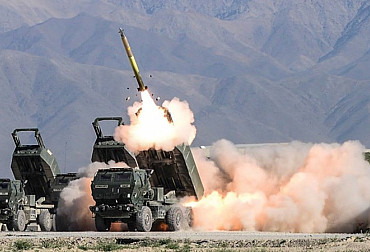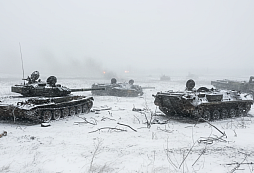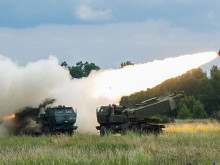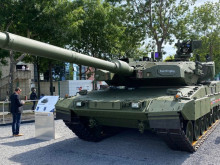Integrated Logistic Support keeps LYNX at the cutting edge
Rheinmetall’s LYNX KF41 is an innovative Infantry Fighting Vehicle designed for providing the required military capability on the battlefields of the present and future. To keep it at the cutting-edge, Rheinmetall has established and maintained a comprehensive Integrated Logistics Support (ILS) program to ensure sustainment of capability and maximum operational availability for the vehicle. Rheinmetall’s support solutions keep the LYNX ready to act at all times, while making through-life support for IFV more cost-effective than ever before.
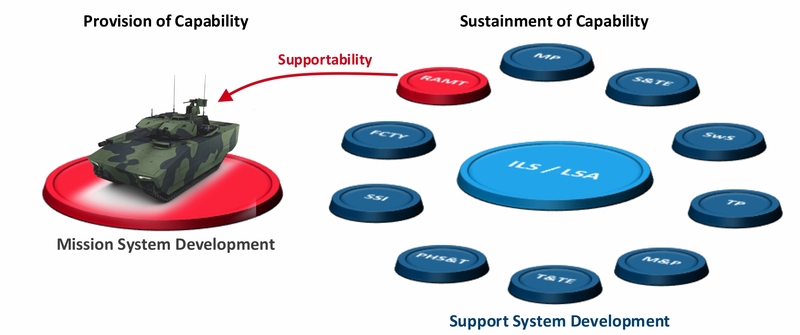 Picture: To keep it at the cutting-edge, Rheinmetall has established and maintained a comprehensive Integrated Logistics Support (ILS) program to ensure sustainment of capability and maximum operational availability for the vehicle. | Rheinmetall / CC BY-NC-ND
Picture: To keep it at the cutting-edge, Rheinmetall has established and maintained a comprehensive Integrated Logistics Support (ILS) program to ensure sustainment of capability and maximum operational availability for the vehicle. | Rheinmetall / CC BY-NC-ND
Knowledge is power: Rheinmetall’s Logistic Support Analysis programme
Rheinmetall has established a Logistic Support Analysis programme in accordance with MIL-STD1388-1A in order to support ILS and other programme management activities. The overall objective of Logistic Support Analysis (LSA) is to ensure consideration and implementation of supportability and support requirements throughout all development stages of the system, its subsystems, and components.
Rheinmetall’s LSA programme is managed by the Logistic Support Analysis Subject Matter Expert and is focused on identifying and correcting design weaknesses and manufacturing processes that may have an adverse impact on the supportability factors for the mission system. The LSA program aims at:
- Influence the system’s design to enhance supportability
- Identify cost drivers
- Identify the required resources for supporting the system once the design has been established
- Develop and provide the support system for sustaining and restoring mission capability
The LSA programme is conducted in conjunction with the systems engineering programme to enhance the supportability elements of the design. It feeds the results of the analyses back to engineering for possible redesign or forward for use in the ILS programme to produce the ILS deliverables.
“With our LSA programme we always have a comprehensive picture of the LYNX’s supportability …,” says Oliver Mittelsdorf, Senior Vice President Sales at Rheinmetall. “These analyses allow us to constantly strive to further optimise LYNX support procedures, meeting the specific needs of the LYNX programme throughout its life cycle. This includes tailoring our analytical methods to the further integration of new systems for each specific programme.”
Smart provisioning of spare parts and support & test equipment
Timely provision of spare parts is essential for a high availability level of an IFV. For the LYNX, Rheinmetall calculates the range and quantity needed with the OPUS 10 software tool. OPUS 10 optimises spare part provision and minimises life cycle costs based on the supply chain, vehicles’ usage profiles and locations, and the Availability, Reliability and Maintainability (ARM) of the equipment needed.
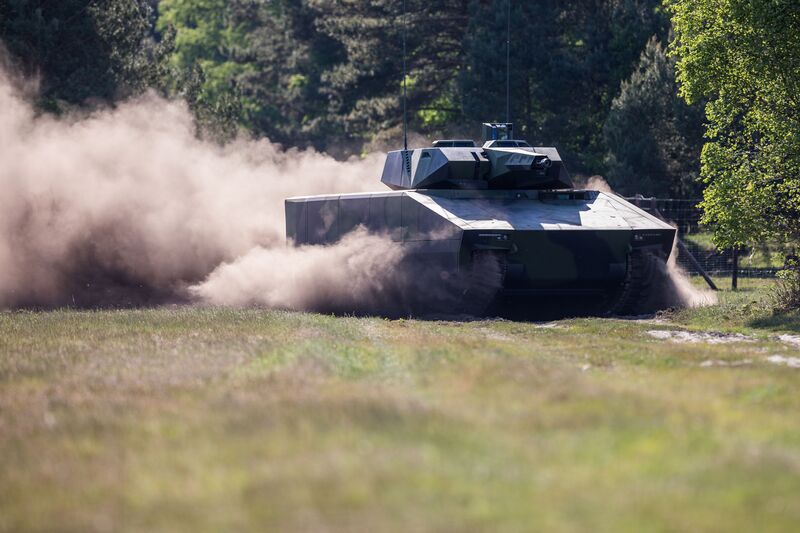 Picture: Timely provision of spare parts is essential for a high availability level of an IFV. For the LYNX (in the picture), Rheinmetall calculates the range and quantity needed with the OPUS 10 software tool. | Rheinmetall / CC BY-NC-ND
Picture: Timely provision of spare parts is essential for a high availability level of an IFV. For the LYNX (in the picture), Rheinmetall calculates the range and quantity needed with the OPUS 10 software tool. | Rheinmetall / CC BY-NC-ND
The range and quantity of Support and Test Equipment (S&TE) is an outcome of the maintenance task analysis, which forms a part of the LSA programme. It identifies all Support and Test Equipment necessary for preventive and corrective maintenance of the Lynx vehicle family to ensure a high operational availability.
To achieve synergy to a maximum extent, Rheinmetall’s Special Tools and Test Equipment (ST&TE) programme will be used as a baseline to provide recommendations and ensure delivery of all system specific ST&TE required to maintain the system as per the utilisation profiles and maintenance support organisation described in the use study.
Interactive Electronic Technical Documentation (IETD)
There would not be a sophisticated new IFV platform without a sophisticated solution for providing guidance and instructions to crews, maintainers, and trainers in action. Lynx KF41 customers will be supported by Rheinmetall’s latest version of well-proven and robust XML-based Interactive Electronic Technical Documentation (IETD): It is a fully digital and portable documentation, based on international standards, running on several devices and retrieval systems. It contains all manuals, procedures and parts data that are required to fulfil daily tasks, complex field missions as well as preventive and corrective maintenance throughout the entire service life.
A maintenance programme for the future
Nowadays, an integrated test system (ITS) monitors the function of subsystems and equipment and locates failures automatically. Additionally build-in tests allow for function control and failure detection on equipment level. This accounts for reduced maintenance elapsed time. Additionally the Use of digital manuals makes the maintenance process more efficient. Even though ITS and build-in test data are recorded in a CAN bus data logger, failures remain not predictable and scheduled maintenance is mainly limited to preventive replacement of critical parts.
In the near future, a Health and Usage Monitoring System (HUMS) will continuously monitor and record the actual condition of parts as well as data on the actual usage of the vehicle by means of multiple sensors. This allows for monitoring progressive wear and tear, predicting failures and finally scheduling maintenance activities. Since maintenance activities are plannable, appropriate maintenance scheduling allows for reducing total maintenance downtime resulting in an increase in availability.
Since many preventive maintenance activities do no longer need to follow a hard time change philosophy, but an on-condition replacement philosophy the total cost for spares is reduced.
With the LYNX, Rheinmetall is moving towards the condition-based maintenance of the future: maintenance becomes predictable and can be better coordinated.
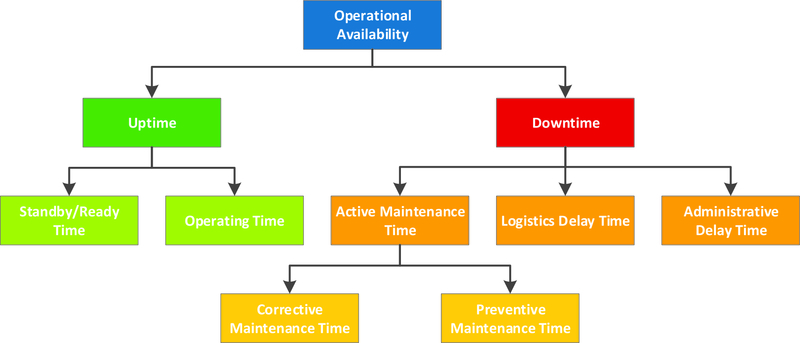 Picture: With the LYNX, Rheinmetall is moving towards the condition-based maintenance of the future: maintenance becomes predictable and can be better coordinated. | Rheinmetall / CC BY-NC-ND
Picture: With the LYNX, Rheinmetall is moving towards the condition-based maintenance of the future: maintenance becomes predictable and can be better coordinated. | Rheinmetall / CC BY-NC-ND
“In the past, maintenance was reactive: Repair it after it breaks.” says Oliver Mittelsdorf. “The aim is to predict upcoming failures and plan proactive maintenance steps accordingly. This method results in a reduction of failures and emergency repairs, and greater overall system reliability. This in turn maximises the LYNX’s operational availability, ensuring it performs as expected during any and every mission providing the required capability.”
















